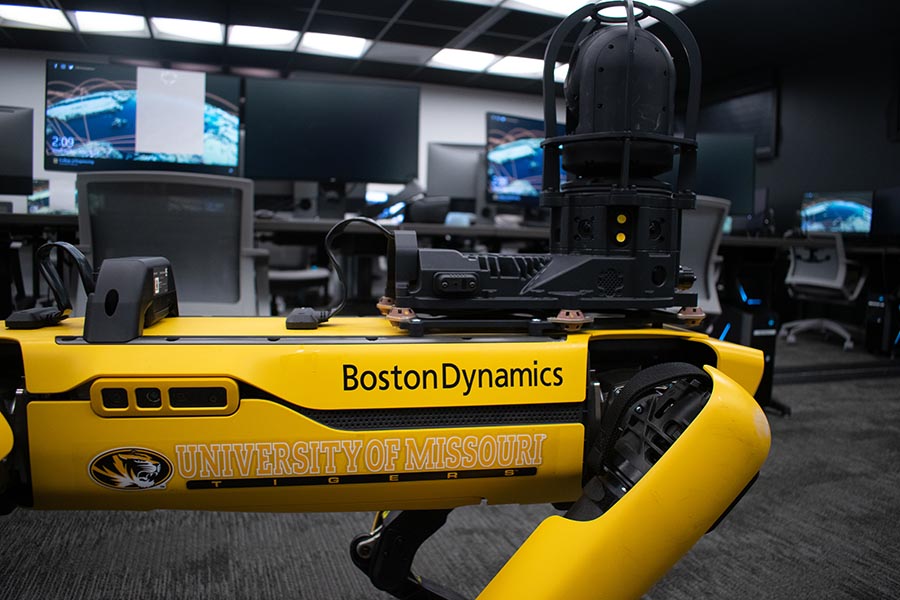April 08, 2021
 Today’s robots are good at performing single tasks. You can buy an autonomous robot, for instance, to vacuum your house. A true single helper robot that can vacuum, cook and wash the dishes? That could be a while, but Dale Musser believes Generation Z will usher in the era of advanced robotics.
Today’s robots are good at performing single tasks. You can buy an autonomous robot, for instance, to vacuum your house. A true single helper robot that can vacuum, cook and wash the dishes? That could be a while, but Dale Musser believes Generation Z will usher in the era of advanced robotics.
“This is the autonomous systems automation generation,” he said. “This is the generation that is going to have to implement it and work with it and look at the social changes that arise from it.”
 Musser weighed in on emerging technologies as part of National Robotics Week, April 5-9. He is an associate teaching professor in the Information Technology Program and helped bring a Spot robot from Boston Dynamics to the Mizzou campus earlier this year.
Musser weighed in on emerging technologies as part of National Robotics Week, April 5-9. He is an associate teaching professor in the Information Technology Program and helped bring a Spot robot from Boston Dynamics to the Mizzou campus earlier this year.
Spot is designed for industrial work. It can be programmed to navigate spaces and terrains, collect data and perform other tasks. It’s perhaps best known for being part of a fleet of dancing robots in a Boston Dynamics video; and last month was featured on a CBS 60 Minutes segment.
‘It’s Coming’
Musser has been dreaming of Spot-like bots since he was a child growing up in an Amish community. He was fascinated with technology and remembers using small motors and whatever scrap pieces he could find to create miniature robots that could move.
At the time, no one could have built anything more sophisticated. The smart phone Musser carries in his pocket today contains 10 times the world’s computational abilities available back then.
That’s why robotics technology hasn’t evolved as quickly as once predicted — and also why Musser believes a new era of robotics is emerging.
“The hold-up has been having computational ability that matches the ability we need in robots,” he said. “We now have access to a wide range of really inexpensive hardware that lets us do amazing things. We have small controllers to build drones and robots — this didn’t exist even 10 years ago. All of the electronics have gotten cheaper and better.”
For example, Musser recently purchased a laptop with built-in artificial intelligence capabilities. The chips that make that possible cost around $12. Twenty years ago, they would have been a million dollars. As these technologies become more widely available and mass produced, Musser believes market demand will catch up.
“We are seeing a rapid expansion of what’s possible because of the kinds of hardware and chips that are available,” he said. “We used to have a room full of computers to process data and make decisions. It’s now in your phone. What if we then have 10,000 of those little chips. And we have clusters of these chips that have access to the cloud and all of the knowledge that’s been collected. It’s coming.”